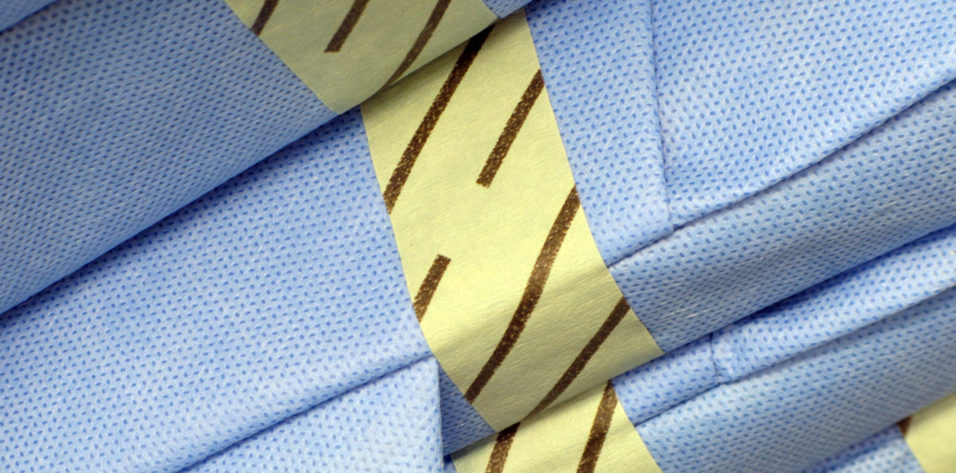

The use of meticulous surgical site preparation, although not standardized, has been widely adopted to prevent acute postoperative endophthalmitis, a dreaded complication of intraocular surgery. Acute postoperative endophthalmitis is characterized by severe inflammation of the interior of the eye due to the introduction of microorganisms during or after intraocular surgery. Although endophthalmitis after cataract surgery is rare, with a reported incidence ranging from 0.03% to 0.2%, it results in significant morbidity.1 The Endophthalmitis Vitrectomy Study (EVS) revealed that coagulase-negative staphylococci from the patient’s periocular skin flora play a significant role in causing intraocular infections, and these findings reinforce the necessity of following stringent surgical site preparation before eye surgery.2
WHAT GOES ON
To reduce the risk of postoperative endophthalmitis, proper site preparation includes attempts to reduce or eliminate the eyelid and conjunctival microflora both preoperatively and intraoperatively.1 Povidone-iodine is a potent antiseptic with a wide spectrum of activity against both gram-positive and gram-negative bacteria, fungi, viruses, and protozoa.3 Although the exact mechanism of germicidal activity of povidone-iodine is unknown, it is thought to exert its bactericidal activity by targeting cytoplasm and cytoplasmic membrane, and its bactericidal effect takes place in a matter of seconds.3 Both 10% and 5% povidone-iodine have been widely used in skin disinfection protocols for preoperative cataract surgery antisepsis. Some studies indicate that 10% povidone-iodine is superior to 5% povidone-iodine in accomplishing skin disinfection.4
Topical antiseptic agents and preoperative, perioperative, and postoperative antibiotics have all been used in attempts to decrease the microbial load on the surface of the eye.5,6 Among these, povidone-iodine has proven efficacy in reducing the bacterial load in the fornices and has demonstrated a reduction in the incidence of endophthalmitis.5 In fact, in a systematic review of all prophylactic methods for cataract surgery, instillation of 5% povidone-iodine on the conjunctiva 3 minutes prior to surgery was the only measure that gained a rating of grade B, indicating moderate importance to clinical outcome, based on evidence from randomized prospective trials.7,8
STEP BY STEP
For surgical site preparation in cataract surgery, a drop of 5% povidone-iodine should first be instilled in the operative eye (see Watch It Now). Next, the eyelashes and eyelid margins are carefully scrubbed with cotton-tipped applicators soaked in 10% povidone-iodine. The periocular skin is then cleaned, starting from the eyelids and moving outward in a circular motion using cotton balls, sponges, or gauze soaked in 10% povidone-iodine. The optimal length of 10% povidone-iodine skin exposure is uncertain; one study suggests 3 minutes.9 Given that duration may be important, the iodine should be allowed to dry on the skin, or at least only the excess should be blotted away rather than wiped off completely. Once the surgical site has been prepared, the periocular skin, lid margins, and eyelashes are carefully blotted to remove excess iodine, thereby enhancing the adherence of the plastic drape.
Watch It Now
Proper application of the surgical drape is also important for preventing bacterial contamination. Several types of commercially available surgical drapes are available, but there is no evidence to suggest superiority of one product over the other. The adhesive drape should then be applied to the ocular surface, with great care taken to exclude the lashes from the surgical field. If the drape is not fenestrated, scissors are then used to open the drape by cutting a slit, with care taken to start the incision in such a way that there is no risk of injuring the eye. If needed, relaxing incisions can be made in the presence of significant overlap between the drape and the eyelid to facilitate folding the drape under the lid margin.
The eyelid speculum is then placed, ensuring that the drape wraps completely around the lid margin and the lashes are securely under the drape. If prolapsed lashes are present, they can be gently swept below the drape using drape scissors or a muscle hook.
Several other techniques have been described to assist with excluding lashes from the surgical field, such as using Tegaderm film dressing (3M)10 or small adhesive strips such as Nexcare Steri-Strips (3M).11 There is a lack of conclusive evidence, however, in support of one technique over the other.
CONCLUSION
Proper surgical site preparation and draping are important steps in decreasing the risk of endophthalmitis in anterior segment surgery. Of all the steps involved, there is strong evidence only in support of application of 5% povidone-iodine to the ocular surface before anterior segment surgery. Periocular skin flora play a major role in causing postoperative infectious endophthalmitis, and there is a general consensus to attempt to exclude lashes from the surgical field to decrease bacterial contamination from the periocular area.
1. Pathengay A, Khera M, Das T, et al. Acute postoperative endophthalmitis following cataract surgery: a review. Asia Pac J Ophthalmol (Phila). 2012;1(1):35-42.
2. Bannerman TL, Rhoden DL, McAllister SK, et al. The source of coagulase-negative staphylococci in the Endophthalmitis Vitrectomy Study. A comparison of eyelid and intraocular isolates using pulsed-field gel electrophoresis. Arch Ophthalmol. 1997;115(3):357-361.
3. Zamora JL. Chemical and microbiologic characteristics and toxicity of povidone-iodine solutions. Am J Surg. 1986;151(3):400-406.
4. Wu P-C, Li M, Chang S-J, et al. Risk of endophthalmitis after cataract surgery using different protocols for povidone-iodine preoperative disinfection. J Ocul Pharmacol Ther. 2006;22(1):54-61.
5. Speaker MG, Menikoff JA. Prophylaxis of endophthalmitis with topical povidone-iodine. Ophthalmology. 1991;98(12):1769-1775.
6. Carrim ZI, Mackie G, Gallacher G, Wykes WN. The efficacy of 5% povidone-iodine for 3 minutes prior to cataract surgery. Eur J Ophthalmol. 2009;19(4):560-564.
7. Ciulla TA, Starr MB, Masket S. Bacterial endophthalmitis prophylaxis for cataract surgery: an evidence-based update. Ophthalmology. 2002;109(1):13-24.
8. Yu CQ, Ta CN. Prevention of postcataract endophthalmitis. Curr Opin Ophthalmol. 2012;23(1):19-24.
9. Nguyen CL, Oh LJ, Wong E, Francis IC. Povidone-iodine 3-minute exposure time is viable in preparation for cataract surgery. Eur J Ophthalmol. 2017;27(5):573-576.
10. Karadayı K. Technique for re-excluding prolapsed eyelashes due to failed draping in cataract surgery. Can J Ophthalmol. 2017;52(4):e141-e143.
11. Fox OJK, Sim BWC, Win S, et al. Technique to exclude temporal lash incursion in phacoemulsification surgery. J Cataract Refract Surg. 2012;38(11):1885-1887.




